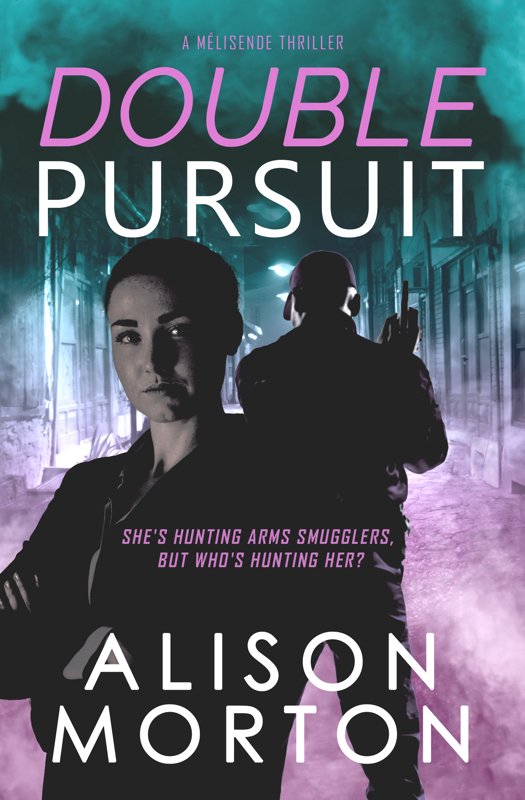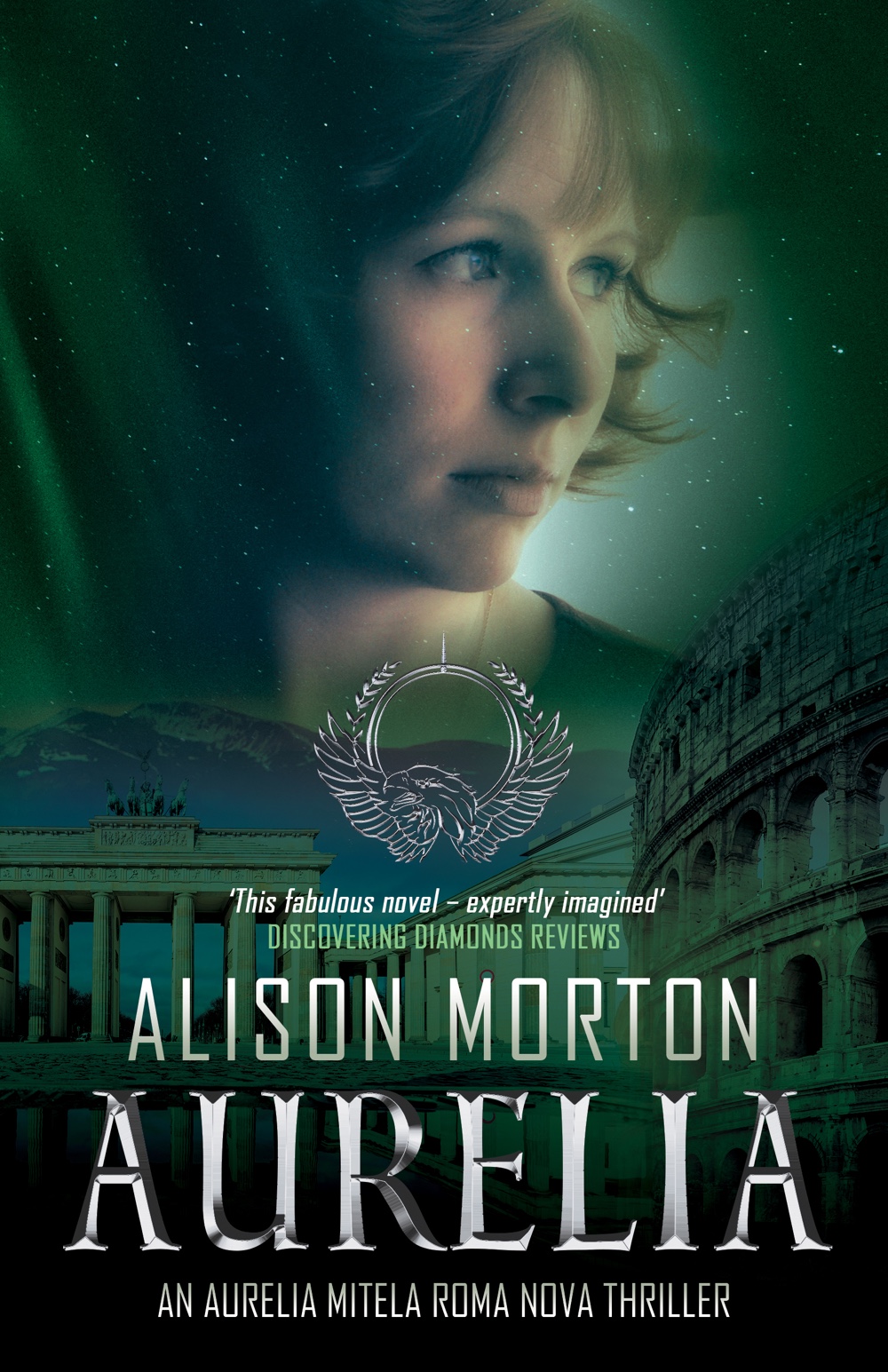I’m delighted to welcome Alison Morton back to the Fictionfire blog! Last time she visited she talked about plotting her series of thrillers and before that she talked about rejacketing her books. Now she is celebrating publishing the next in her Roma Nova series. Set in the 4th century, it is the second in a two-part Foundation story, harking back to the beginnings of Roma Nova, a country where a remnant of the Roman Empire survives, ruled by women, into the 21st century. It is an absolute tour de force of the ‘what if’ power of imagination that writers – and readers – love! Rome and its way of life is corrupted and disintegrating; as the risks grow, the central characters in Exsilium realise they must escape and make a new life for themselves. The result is an incredibly detailed and involving journey, as compelling as any tale of wagon trains heading across the prairies to California! What I love about Alison’s fiction is that you care about the people but you also learn so much – and it’s often the tiny details and references that are the most telling, whisking you back into a lost way of life and way of thinking.
Here are Alison’s thoughts on that eternal tension between being true to the past and to the needs of modern readers.
If I pick up a book set in the 14th century and I hear a character say, ‘Have you reached out to her?’, my fingers itch for a red pen. If that book is set in the 2nd century, I throw my Kindle on the floor. No Roman or Medieval speaker used the expression ‘reached out’; they spoke or talked to the other person, possibly reasoned with them, depending on the context.
Romans spoke British English, of course(!). Who hasn’t watched I Claudius or HBO’s Rome? To be serious for a moment, we don’t know how people spoke in the past. Surviving written sources show us how they wrote in certain contexts such as reporting speeches, writing travel accounts, book-keeping, recipes, laws, political appointments, even informal letters with dinner party invitations or moaning about bar bills.
In our own world and that of our parents and perhaps grandparents, we know how differently people of different ages, backgrounds, education and experience speak or spoke. Society is far less hierarchical now than it was previous times, even up to the Second World War. In Jane Austen’s time, sisters spoke in one mode to each other, a more respectful way to their parents and in a third way to servants. Comportment (or behaviour, as we now call it) reflected a person’s position in society as well as their age.
Romans were very mindful of each tiny slice of societal position and dinner invitations would be handed out, or not, according to these rules. Some slaves could be punished for the least impudent word or look while others, such as personal attendants, secretaries or hairdressers, had more leeway, but they still knew their place. When I read a scene in a recent novel where a young female slave backchatted a male head of household, I sighed. Hard though it may seem to us, if that slave had done that in reality, she would have been whipped and possibly sent out to field work or sold.
Immersing ourselves as modern writers within a historical setting with alien values and outlooks can be difficult, even upsetting, but our task must be to form a bridge for the reader between that past and our present. Our novels may convey the flavours (more likely smells) of our chosen period, the ways people acted, their appearance, the luxury or misery of their surroundings, their artisanship, coins, laws and food. However, they are still people, human beings like us. They will feel joy, hope, unhappiness, fear and pleasure as we do. How significant those feelings are in the context of their lives and how they communicate them is another question.
For the novelist, one of the best ways to show characters’ thoughts and feelings is through dialogue. Young Marcus and his buddy, Antonius, might be going off on a spree, but being adolescents, they might be worried about bunking off their lessons and their consequent punishment – probably a thorough beating. While these boys’ conversation will be informal, it will not include ‘like’ or ‘innit’ every other word, or ‘wicked’ or ‘cool’.
Roman males spoke robustly; elite males were rigorously trained in oratory as part of a demanding education, so their speech was necessarily formal especially when talking with their fellow senators. Members of the military would have used a version of ‘squaddie speak’: short, succinct dialogue with often denigrating remarks about non-Roman peoples, lumping them together as barbarians.
Roman women were brought up to be wives and mothers, learn household skills and were often given at least basic literacy and numeracy skills. They would defer to their male head of household, but, of course, like women throughout the ages, many would know how to circumvent the worst aspects of situations they disliked. Poorer women worked and their dialogue would be plain, with a smaller vocabulary and probably more world-weariness than wealthier sisters.
For the writer in any Roman period, even a time in transition such as the world of late 4th century EXSILIUM, or the Medieval period, there are more subtle traps. In 1995, Bernard Cornwell published The Winter King, the first of a trilogy about King Arthur. In the book, set in the 6th century, he mentioned snowdrops. ‘You fool!’ a correspondent wrote to him, ‘Everyone knows snowdrops were not introduced to Britain till the 12th century!’ Cornwell confessed he had not known, but reported he was amazed by how a trivial error could prompt letters of seething rage.
I recently fell headlong into a major hole when drafting EXSILIUM, but caught it in the second version of the uncorrected proof sent out to advance readers. Dozen and half-dozen are such common and harmless everyday words that I hadn’t noticed how often I’d used them to mean small groups. The main problem was that Romans didn’t have the concept of a dozen. It derives from old French dozaine or doseine meaning a collection of twelve things or units with first use c. 1300. Ironically, it’s founded on the Latin number for twelve duodecim, but its sense as a word for a group was not in use in the Roman period.
Luckily, I knew not to use minutes and seconds for short intervals of time – also not current in the Roman period – and so moments, instants, breaths and heartbeats are scattered throughout EXSILIUM. Furniture is another trap and I consigned a sofa to oblivion and replaced it with a stool.
But in a comforting way, I discovered with my writer’s eye a monumental blooper when I re-read a favourite Roman novel by A Famous Author which was set in the 2nd century AD. I had bought the book nearly twenty years ago. Our hero on horseback was stuck in traffic when approaching the gate of Rome and stood up in his stirrups to get a better view of the obstacle ahead. The problem? The Romans didn’t have stirrups until the East Romans adopted them, possibly from the Avars, in the 6th century. I smiled, then read on.
Writers go to a lot of trouble to bring the past to life!
Exsilium: exile is living death to a Roman
AD 395. In a Christian Roman Empire, the penalty for holding true to the traditional gods is execution.
Maelia Mitela, her dead husband condemned as a pagan traitor, leaving her on the brink of ruin, grieves for her son lost to the Christians and is fearful of committing to another man.
Lucius Apulius, ex-military tribune, faithful to the old gods and fixed on his memories of his wife Julia’s homeland of Noricum, will risk everything to protect his children’s future.
Galla Apulia, loyal to her father and only too aware of not being the desired son, is desperate to escape Rome after the humiliation of betrayal by her feckless husband.
For all of them, the only way to survive is exile.
Alison Morton writes award-winning thrillers featuring tough but compassionate heroines. Her ten-book Roma Nova series is set in an imaginary European country where a remnant of the Roman Empire has survived into the 21st century and is ruled by women who face conspiracy, revolution and heartache but use a sharp line in dialogue. The latest, EXSILIUM, plunges us back to the late 4th century, to the very foundation of Roma Nova.
She blends her fascination for Ancient Rome with six years’ military service and a life of reading crime, historical and thriller fiction. On the way, she collected a BA in modern languages and an MA in history.
Alison now lives in Poitou in France, the home of Mélisende, the heroine of her two contemporary thrillers, Double Identity and Double Pursuit.
Social media links
Connect with Alison on her thriller site: https://alison-morton.com
Facebook author page: https://www.facebook.com/AlisonMortonAuthor
X/Twitter: https://twitter.com/alison_morton @alison_morton
Alison’s writing blog: https://alisonmortonauthor.com
Instagram: https://www.instagram.com/alisonmortonauthor/
Goodreads: https://www.goodreads.com/author/show/5783095.Alison_Morton
Threads: https://www.threads.net/@alisonmortonauthor
Alison’s Amazon page: https://Author.to/AlisonMortonAmazon
Newsletter sign-up: https://www.alison-morton.com/newsletter/













